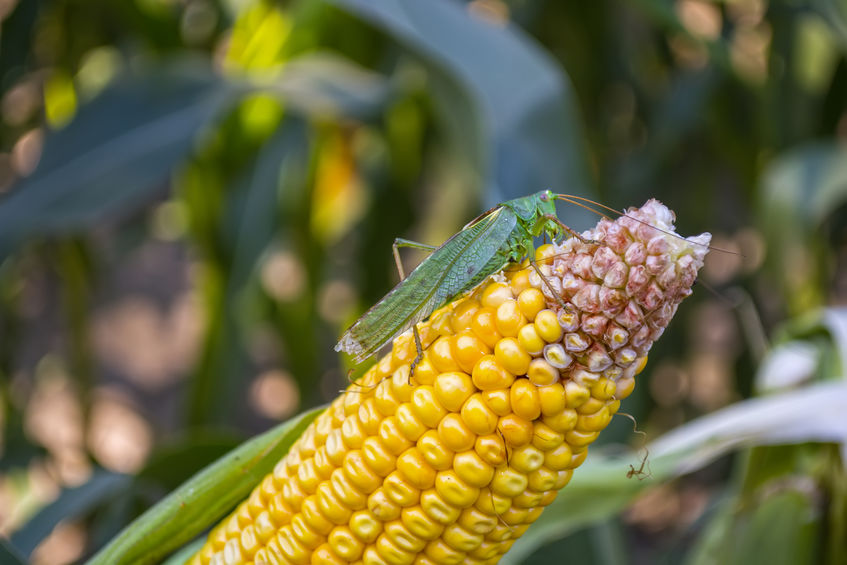Our modern society suffers from “chemophobia,” a fear of industrially-made chemicals. Synthetic pesticides, used to control insects, rodents, and weeds and to boost crop yields, are a major concern for many people. But the evidence shows that everyday exposure to synthetic pesticides is negligible and that widespread pesticide fears are unfounded.
Farmers have long sought to reduce damage from agricultural pests. Sulfur compounds were used as pesticides by the Sumerians as early as 4,500 years ago. Ancient Persia used a powder of pyrethrum, derived from dried chrysanthemum flowers, as an insecticide. Pyrethrum remains a frequently used natural pesticide. But modern chemical pesticides are labeled unsustainable and are widely feared by the public.
In her 1962 best-selling book Silent Spring, Rachel Carson leveled an attack on agricultural pesticides that continues today, stating: “Since the mid-1940s over 200 basic chemicals have been created for use in killing insects, weeds, rodents, and other organisms described in the modern vernacular as ‘pests’ … Can anyone believe it is possible to lay down such a barrage of poisons on the surface of the earth without making it unfit for all life?”
Carson’s book targeted the widespread spraying of dichlorodiphenyltrichloroethane (DDT), an effective pesticide against malarial mosquitoes, typhus-carrying lice, farm pests, and other insects. Carson falsely claimed that DDT was killing birds and causing cancer in humans.
Due to a rising tide of public concern, the Environmental Protection Agency (EPA) banned DDT use in 1972, followed by bans in most developed countries. DDT bans are blamed for triggering a malaria resurgence and millions of deaths in developing nations over following decades.
But DDT use was not found to be harmful to people, and with the possible exception of the thinning of raptor egg shells, no environmental impacts from DDT have been identified. In 2006, the World Health Organization lifted its ban on DDT and authorized indoor spraying of DDT to control malaria. Nevertheless, because of Carson’s book and fears promoted by environmental groups, synthetic pesticides are wrongly blamed for a wide range of human health problems.
Pesticides are poison. At high levels of exposure, pesticides can be harmful to people and associated with cancer, genetic and reproductive issues, nervous system damage, and skin damage.
But, as with all natural or synthetic chemicals, the dose makes the poison. Paracelsus, a Swiss physician of the 1500s, is regarded as the father of modern toxicology. He stated, “All substances are poison. There is none which is not a poison. The right dose makes the difference between a poison and a remedy.” Even sunlight and water are poisons in high doses. The good news is that, for the average person, synthetic pesticides are encountered at far below harmful levels.
The US Department of Agriculture (USDA) analyzes samples from thousands of foods each year to detect synthetic pesticide residues. Laboratory methods detect residues down to low parts-per-billion levels. In 2016, the USDA collected and tested 10,365 samples from dairy products, fruits, and vegetables. Over 99.5 percent of the samples had synthetic pesticide levels below limits set by the EPA.
US and European pesticide safety levels are set at extremely low levels of exposure, typically 100 times below the no observed adverse effect level found in laboratory experiments with animals. Limits for pesticides in water are yet hundreds of times lower than food-limit levels. Food and water in developed nations today is remarkably free of synthetic pesticides.
Through great marketing efforts, “natural” agricultural techniques have become favorites, while “processed” or “synthetic” methods are rejected. Organic fertilizer, or horse manure, is promoted as superior to chemically-processed nitrogen fertilizer. But the chemical composition of a material is the important factor, not whether it is “natural.” Natural and synthetic pesticides are an excellent example.
The vast majority of pesticides that humans ingest are natural, produced by plants. Natural pesticides include aflatoxin, nicotine, pyrethrum, and strychnine. Plants produce pesticides to deter insects and rodent predators. Dr. Bruce Ames of the University of California estimated that 99.99 percent of pesticides in our diet are from plants. Only 0.01 percent of dietary pesticides are synthetic pesticides produced by industry that Rachel Carson so feared.
Caffeine is an insecticide. A single cup of coffee contains natural pesticides equal in weight to  a full year’s consumption of synthetic pesticides. This does not mean that coffee is hazardous, only that dietary fears about synthetic pesticides are irrational.
a full year’s consumption of synthetic pesticides. This does not mean that coffee is hazardous, only that dietary fears about synthetic pesticides are irrational.
One of the early concerns about DDT and some other organochloride pesticides was their tendency to persist in the environment. DDT is fat soluble and can accumulate in the tissues of birds and animals.
But newer pesticides are designed to quickly break down in farm fields to minimize any long-term environmental impact. Glyphosate, the active ingredient in the herbicide RoundUp, breaks down within a few weeks of application. In addition, bioengineered crops are designed to allow less pesticide to be used while increasing agricultural yields.
Only a few members of society need to take proper precautions regarding synthetic pesticides. These are people manufacturing or applying pesticides that may be exposed to high doses of the chemicals.
So enjoy your coffee and the abundant foods produced by modern agriculture. But don’t sweat the pesticides.
